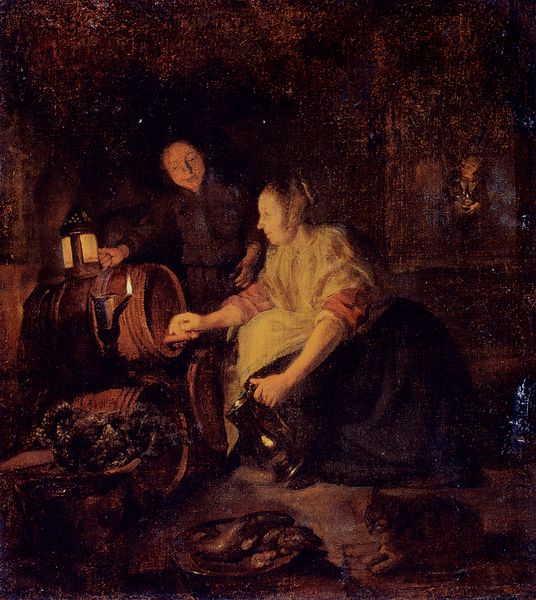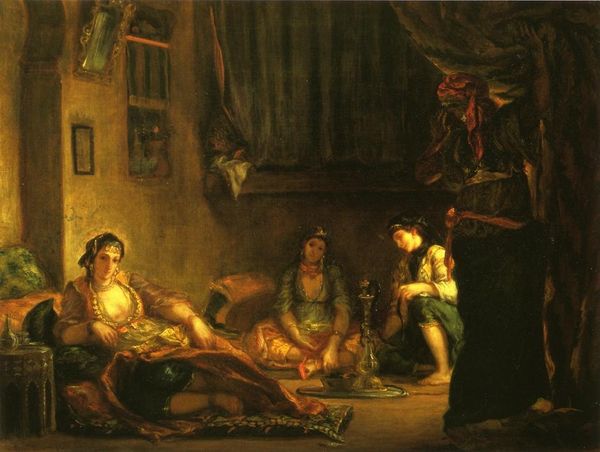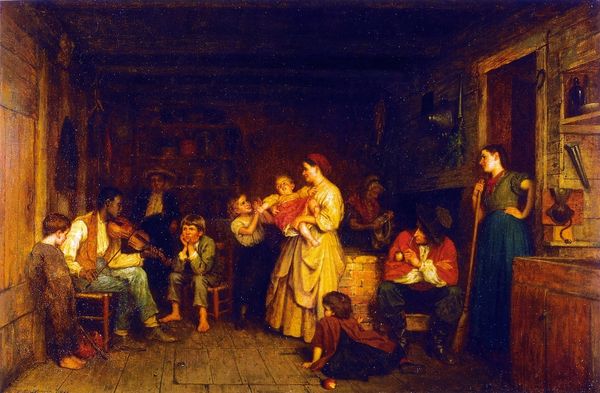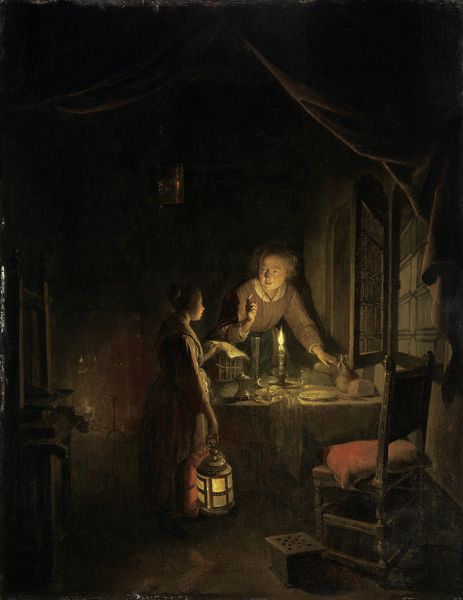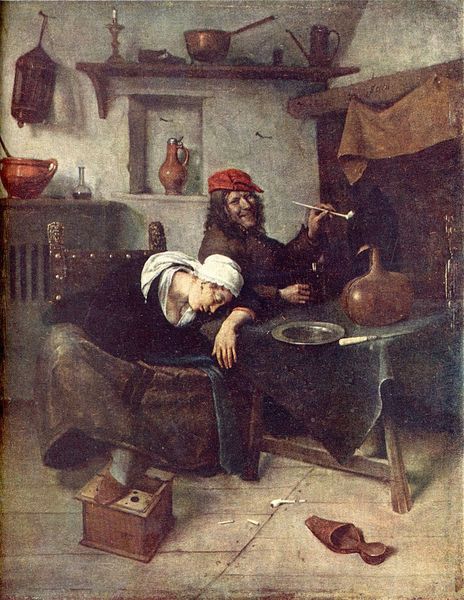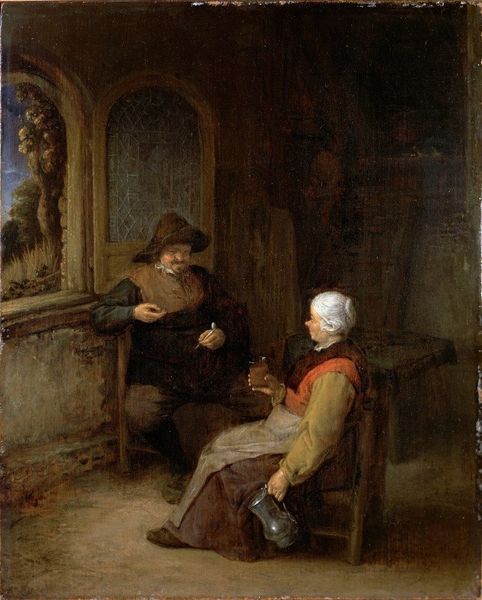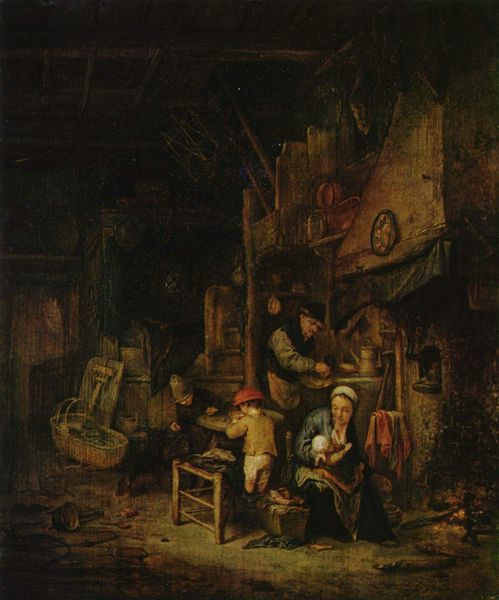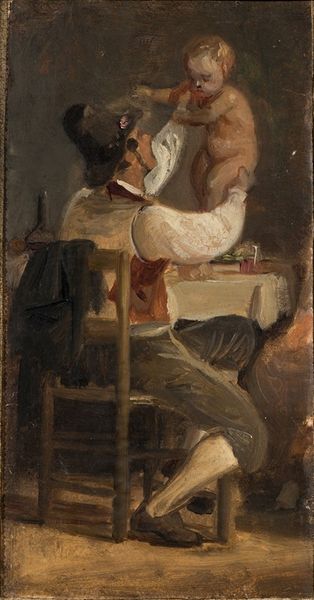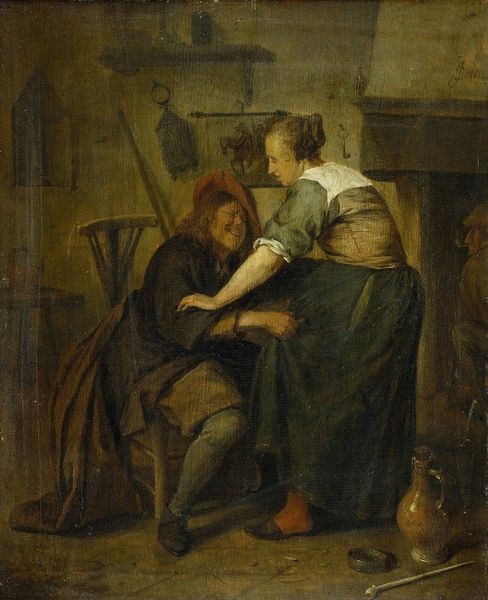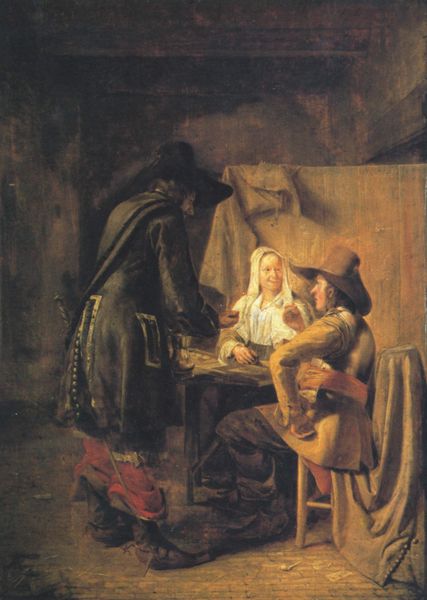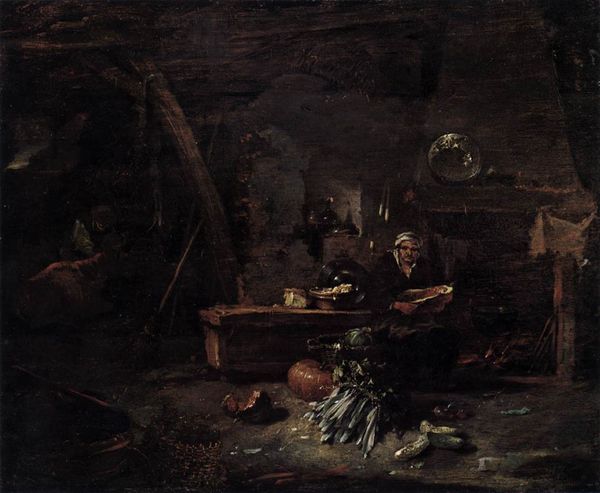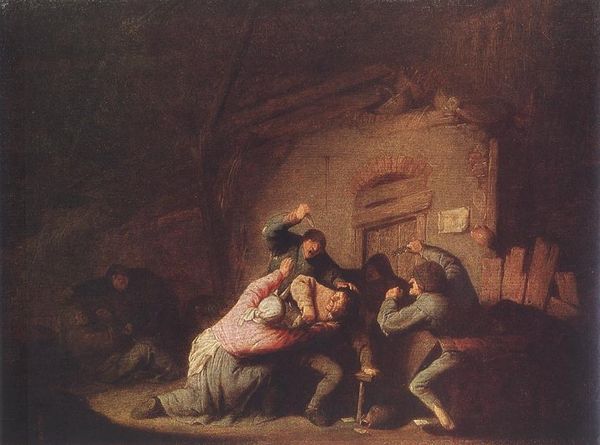
painting, oil-paint
#
figurative
#
narrative-art
#
painting
#
oil-paint
#
figuration
#
oil painting
#
neo expressionist
#
romanticism
#
history-painting
Copyright: Public Domain: Artvee
Curator: Eugène Delacroix painted this piece, "Faust and Mephistopheles," between 1827 and 1828, capturing a pivotal moment from Goethe's famous play. Editor: Wow, intense mood! I immediately get a dark fairytale vibe. Is it just me, or is the whole scene shrouded in a kind of secretive unease? Like they are plotting something seriously mischievous. Curator: Absolutely. Delacroix was a master of Romanticism, and here, we see that interest manifest. The play itself examines the tension between human ambition and divine or demonic influence, reflected in the artist’s visual interpretation of their shadowy negotiation. Editor: I’m particularly drawn to Mephistopheles's stance; kind of leaning in, almost invading Faust's space. Very symbolic of the dark bargain they're making. His power radiates subtly—not through grand gestures, but insidious closeness. Makes my skin crawl a bit, honestly! Curator: That spatial dynamic speaks volumes. Gender obviously informs the narrative too, even if we only see Faust being tempted by power in the form of another man—a very homoerotic vibe is perceptible within this particular rendition. Also note Delacroix was deeply engaged with representing historical narratives—so class matters too. Editor: Definitely. All those books and scrolls around the top also say something about knowledge being part of the allure. It looks almost claustrophobic, but kinda cool. The details pop out almost unexpectedly. Look! A skull. Nice touch. This dude, Faust, seems pretty easily tempted, just by proximity. The sword he holds maybe alludes to his other ambitions besides just the knowledge itself. Curator: Exactly! The setting plays an essential role in anchoring our interpretation. Faust's desire for transcendence—via a pact, obviously—is contextualized within larger societal norms of seeking wealth and power, both being predominantly accessible to those in positions like his at that time. This illustrates the historical positioning of patriarchal ambition itself. Editor: I have to say, I came in ready to snark at a classic, but Delacroix managed to pull me in. I think the colors made it worth a closer inspection: very expressive and dark. Curator: His commitment to illustrating significant historical and literary moments gave us powerful visuals with which to consider power, identity, and history, which makes viewing this worthwhile today.
Comments
No comments
Be the first to comment and join the conversation on the ultimate creative platform.

